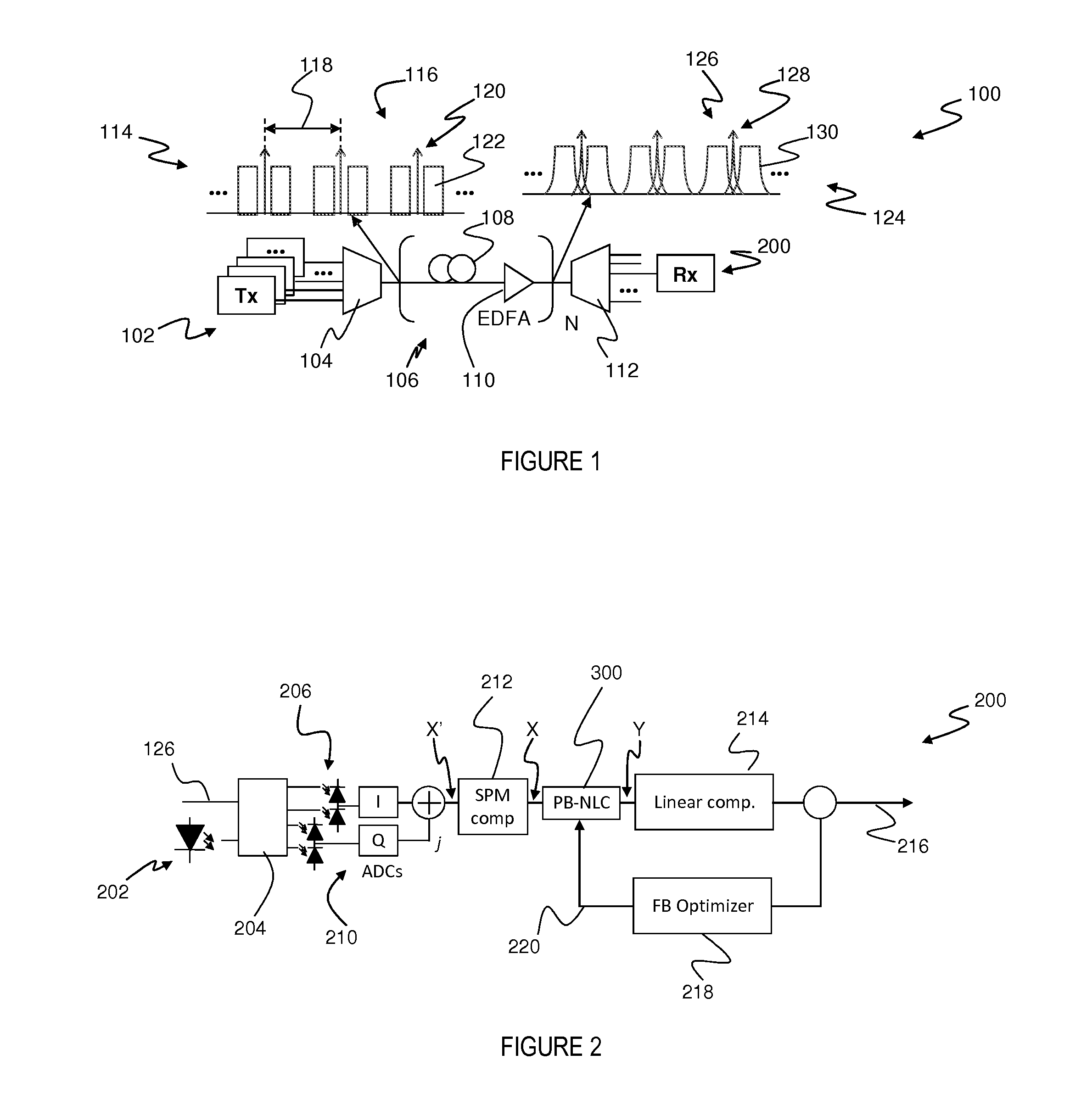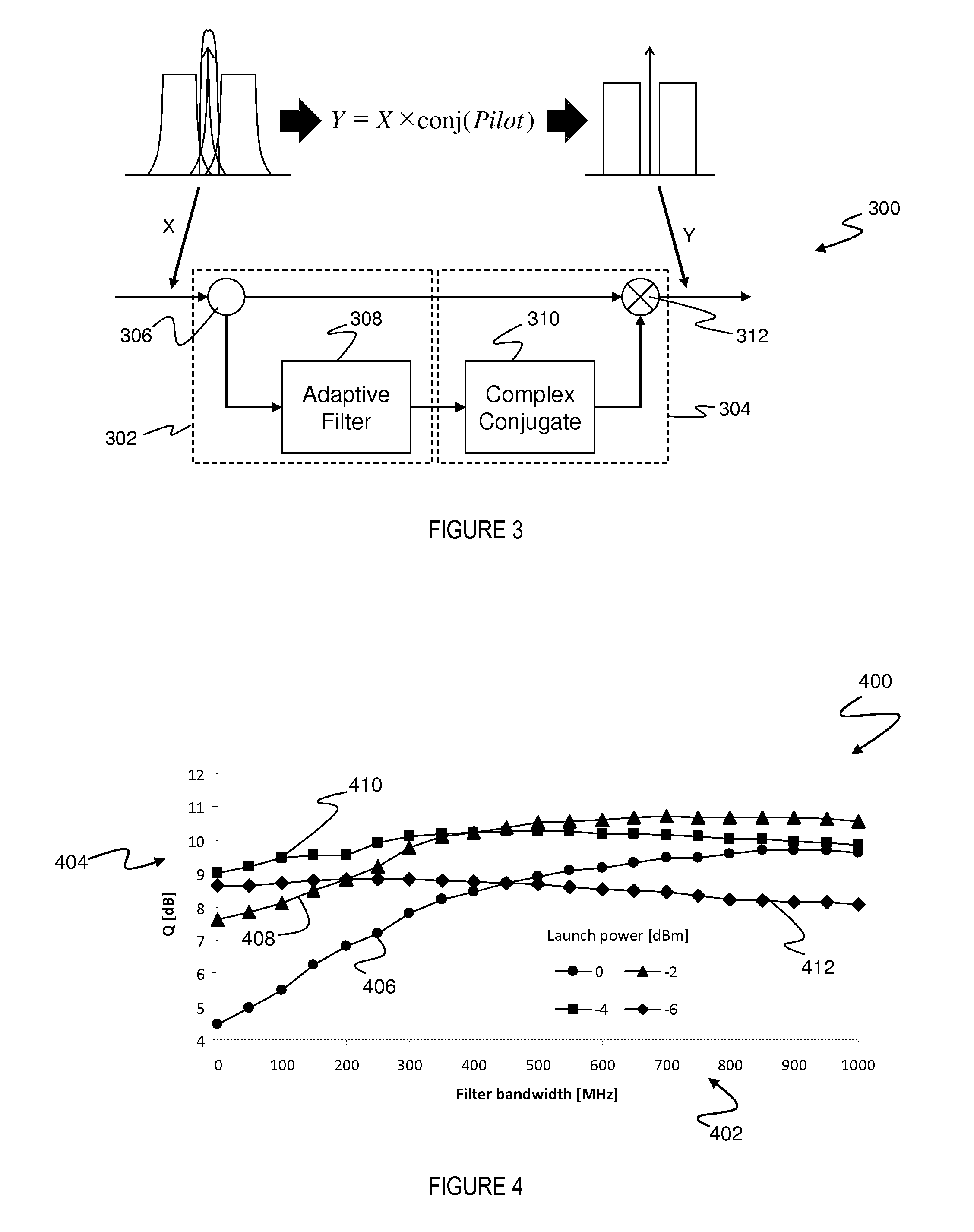Electronic compensation of cross-phase modulation
a cross-phase modulation and electronic compensation technology, applied in the direction of fibre transmission, distortion/dispersion elimination, electrical equipment, etc., can solve the problem that the channel capacity limitation of a coherent optical communication link is generally nonlinear transmission impairment, the channel capacity of an optical link cannot be increased indefinitely, and the degradation of transmitted signals. to achieve the effect of maximising the quality of the compensated signal
- Summary
- Abstract
- Description
- Claims
- Application Information
AI Technical Summary
Benefits of technology
Problems solved by technology
Method used
Image
Examples
Embodiment Construction
[0054]FIG. 1 is a schematic diagram of an optical transmission system 100 embodying the present invention. The system 100 employs Wavelength Division Multiplexing (WDM), in which a plurality of transmitters 102, each operating at a different wavelength, are multiplexed via a WDM multiplexer 104, and the resulting WDM signal is transmitted via optical transmission link 106. The link 106 comprises a plurality (N) of spans, each of which includes a length of single-mode optical fibre 108, and an amplifier 110, such as an Erbium-Doped Fibre Amplifier (EDFA). Some or all of the fibre spans may also incorporate chromatic dispersion management or compensation elements, such as dispersion compensating fibres, which may advantageously be deployed within the amplifying modules 110.
[0055]A WDM demultiplexer 112 separates the various transmitted wavelength channels, each of which is received via a receiver 200 embodying the present invention.
[0056]The optical transmission link 106 has an input ...
PUM
 Login to View More
Login to View More Abstract
Description
Claims
Application Information
 Login to View More
Login to View More - R&D
- Intellectual Property
- Life Sciences
- Materials
- Tech Scout
- Unparalleled Data Quality
- Higher Quality Content
- 60% Fewer Hallucinations
Browse by: Latest US Patents, China's latest patents, Technical Efficacy Thesaurus, Application Domain, Technology Topic, Popular Technical Reports.
© 2025 PatSnap. All rights reserved.Legal|Privacy policy|Modern Slavery Act Transparency Statement|Sitemap|About US| Contact US: help@patsnap.com



